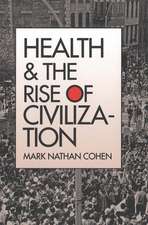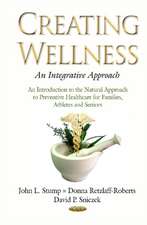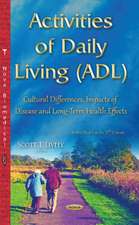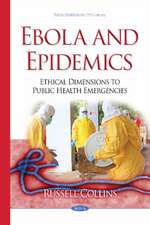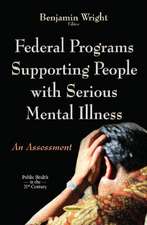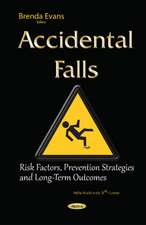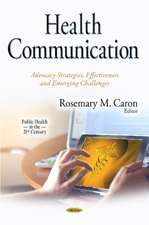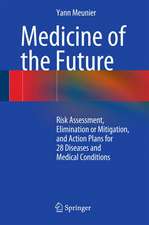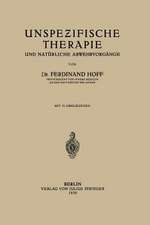Community Wayfinding: Pathways to Understanding
Editat de Rebecca H. Hunter, Lynda A. Anderson, Basia L. Belzaen Limba Engleză Paperback – 19 iun 2018
Overall, the book focuses on the economic and commercial benefits of good wayfinding, its potential impact on the health of individuals and communities, as well as strategies for the journey ahead. It will appeal to numerous professionals across many disciplines from architecture and cartography to public health and urban planning. Additionally, the book can help advance a dialogue among those interested in enhancing the livability of their communities.
| Toate formatele și edițiile | Preț | Express |
|---|---|---|
| Paperback (1) | 1094.44 lei 43-57 zile | |
| Springer International Publishing – 19 iun 2018 | 1094.44 lei 43-57 zile | |
| Hardback (1) | 1101.37 lei 43-57 zile | |
| Springer International Publishing – 22 mai 2016 | 1101.37 lei 43-57 zile |
Preț: 1094.44 lei
Preț vechi: 1152.04 lei
-5% Nou
Puncte Express: 1642
Preț estimativ în valută:
209.49€ • 227.63$ • 176.08£
209.49€ • 227.63$ • 176.08£
Carte tipărită la comandă
Livrare economică 21 aprilie-05 mai
Preluare comenzi: 021 569.72.76
Specificații
ISBN-13: 9783319809557
ISBN-10: 3319809555
Pagini: 282
Ilustrații: XIV, 282 p. 57 illus.
Dimensiuni: 155 x 235 mm
Greutate: 0.42 kg
Ediția:Softcover reprint of the original 1st ed. 2016
Editura: Springer International Publishing
Colecția Springer
Locul publicării:Cham, Switzerland
ISBN-10: 3319809555
Pagini: 282
Ilustrații: XIV, 282 p. 57 illus.
Dimensiuni: 155 x 235 mm
Greutate: 0.42 kg
Ediția:Softcover reprint of the original 1st ed. 2016
Editura: Springer International Publishing
Colecția Springer
Locul publicării:Cham, Switzerland
Cuprins
PART I: Foundations of Wayfinding: 1: Introduction to Community Wayfinding: Rebecca H. Hunter, Lynda A. Anderson, Basia Belza.- 2: Human Wayfinding: Integration of Mind and Body: Anna E. Vandenberg.- PART II: The Community Environment and Wayfinding: 3: The Space Syntax of Intelligible Communities: John Peponis.- 4: Legibility and Continuity in the Built Environment: Michael R. King and Elise de Jong.- 5: Design for All Users: Jon A. Sanford.- 6: The Challenge of Wayfinfing in Health Care Environments: Per Mollerup.- Part III: Tools and Technology: 7: Maps in the Head and Tools in the Hand: Wayfinding and Navigation in a Spatially Enabled Society: Toru Ishikawa.- 8: Maps to Apps: Evaluating Wayfinding Technology: Sean P. Mullen, Daniel E. Palac and Lucinda L. Bryant.- 9: Wayfinding, Mobility, and Technology for an Aging Society: Marlon Maus, David A. Lindeman and William A Satariano.- Part IV: Practice and Policy: 10: Promoting Walking via Ease of Wayfinding: Chanam Lee.- 11: Bridging the Gap: Increasing Access Through Training and Technology: Rachel Beyerle and Julie E. Dupree.- 12: Transportation Systems and Wayfinding: Edward R. Stollof.- 13: The Role of Advocacy: Scott Bricker.- Part V: Integrative Perspectives: 14 Linking Wayfinding and Wayfaring: Ditte Bendix Lanng and Ole B. Jensen.- 15: The Journey Forward: Rebecca H. Hunter, Steven P. Hooker and Daniela B. Friedman.- Index.
Notă biografică
Rebecca H. Hunter, MEd has over 25 years of experience in research, teaching and community service roles at the University of North Carolina at Chapel Hill. Currently affiliated with the Center for Health Promotion and Disease Prevention, her expertise falls largely into the categories of mobility, aging and the built environment. Most recently, she led a series of initiatives pertaining to community wayfinding to articulate the relationship between public health and wayfinding and to develop a blueprint for research, practice and policy. She has also actively engaged in research translation and dissemination, collaborating with practitioners, policy makers and researchers in diverse fields such as planning, transportation, architecture, universal design, aging services, engineering, healthcare and public health.
Lynda A. Anderson, PhD, has worked in the field of aging and public health for over 30 years. She retired from federal service in 2015 having worked at Centers for Disease Control and Prevention for 23 years, 10 years as the Director for Healthy Aging. She has more than 150 publications and is a co-author on the book, "Public Health for an Aging Society" (2012). Lynda has a long-time passion for gardening and designing gardens using native plants. She is currently engaged in volunteer efforts to help promote cognitive and physical health through community gardening and environmental activities including wayfinding.
Basia Belza, PhD, RN, FAAN, is the Aljoya Endowed Professor in Aging, School of Nursing and Adjunct Professor, School of Public Health, and an investigator with the Health Promotion Research Center at University of Washington, Seattle. She has a sustained record of scholarship related to the dissemination of evidence- and community-based health promotion programs and development and implementation of a research and translation agenda on the public health aspects of healthy aging. Her particular interests lie at the intersection of increasing older adults’ physical activity and improving access to and safety of the built environments in which they are active.
Textul de pe ultima copertă
This book examines wayfinding from a broad public health perspective and articulates what needs to be done to create better wayfinding for all people regardless of age, ability, or mode of transportation. Addressing both science and the human experience, the book brings together a group of international experts to examine community wayfinding from a variety of viewpoints.
It first presents a critical foundation for understanding wayfinding from an individual perspective. Next, it describes relevant design principles and practices by drawing upon architecture, environmental graphic design, universal design (UD), and urban planning. The book then goes on to examine wayfinding tools and innovative technologies ranging from maps to apps to complex systems. In addition, coverage includes case studies, lessons from wayfinding improvement initiatives, and recommendations for future research, practice, and policy.
Overall, the book focuses on the economic and commercial benefits of good wayfinding, its potential impact on the health of individuals and communities, as well as strategies for the journey ahead. It will appeal to numerous professionals across many disciplines from architecture and cartography to public health and urban planning. Additionally, the book can help advance a dialogue among those interested in enhancing the livability of their communities.
Caracteristici
Brings together international experts to offer multidisciplinary perspectives on community wayfinding
Describes relevant design principles and practices by drawing upon architecture, communications, universal design (UD), planning, and engineering
Examines wayfinding tools and innovative technologies ranging from maps to apps to complex wayfinding systems
Describes relevant design principles and practices by drawing upon architecture, communications, universal design (UD), planning, and engineering
Examines wayfinding tools and innovative technologies ranging from maps to apps to complex wayfinding systems


